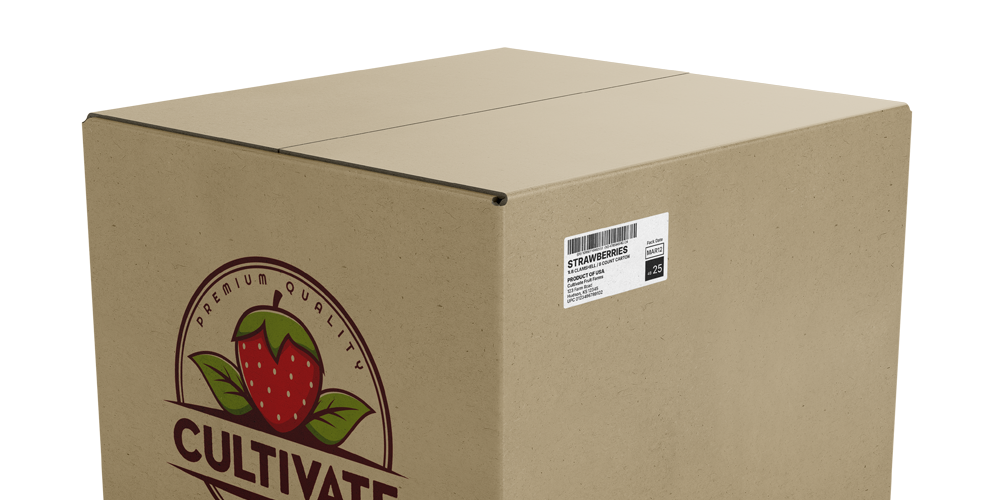What Are PTI Labels and Why Are They Important?

PTI labels, or Produce Traceability Initiative labels, are barcode labels placed on fresh produce packaging to help track products throughout the supply chain. They ensure food safety, improve recall efficiency, and make supply chain management more transparent.
Below, you'll find exactly why PTI labels matter, how they're used, and why they're critical for compliance and food safety.
Why PTI Labels are Essential
PTI labels improve transparency in the fresh produce supply chain by:
- Ensuring Traceability: PTI labels use Global Trade Item Numbers (GTINs), lot numbers, and dates, helping trace products back to their origin.
- Speeding up Recalls: If contamination occurs, PTI labels make recalls faster, reducing health risks and minimizing damage.
- Enhancing Consumer Safety: Tracking each product reduces the risk of unsafe food reaching consumers.
- Meeting Regulatory Compliance: PTI labeling is key to meeting the FDA’s Food Safety Modernization Act (FSMA) and retailer requirements.
What is PTI Compliance?
PTI-compliant labels follow a standardized format so every box of produce can be traced back to its source. While there are multiple formats in use, most PTI labels include a barcode (usually GS1-128), human-readable product info, a pack date, and a lot number. The specific structure helps retailers, distributors, and inspectors read and scan information quickly—whether it's on a packing line or in a cold storage warehouse.
If you're looking for a full breakdown of the data that goes on a PTI label, including how to print it yourself, check out our detailed guide: What Goes on a PTI Label and How to Print One.
Using Thermal Labels for PTI Compliance
Choosing the right type of labels is critical for maintaining PTI compliance. Many growers and distributors prefer thermal printer labels because they’re durable, cost-effective, and offer sharp barcode printing.
Why Thermal Labels are Ideal for PTI Labeling:
- Clear and Scannable: Thermal labels produce sharp barcodes for reliable scanning.
- Durable and Smudge-Free: High-quality thermal labels resist moisture and handling during shipping.
- Quick and Efficient Printing: Compatible with most thermal printers, allowing high-volume printing without downtime.
- Cost-Effective: Using thermal label rolls reduces label costs compared to other methods.
How to Choose the Right Thermal Labels for PTI:
When selecting labels, consider these factors:
- Label Material: Choose durable thermal label paper that withstands transportation conditions.
- Adhesive Type: Permanent adhesive is recommended to keep labels securely attached.
- Compatibility: Ensure labels are compatible with your thermal printer for reliable printing.
- Size: The most common size for PTI labels is 4x2 thermal labels.

Common Industries that Use PTI Labels
- Produce Growers and Farmers: Track produce from harvest to market.
- Distributors and Warehouses: Maintain accurate inventory management.
- Retail and Grocery Stores: Improve stock management and consumer safety.
Key Benefits of Using PTI Labels:
- Improved inventory accuracy
- Faster, more efficient recalls
- Enhanced food safety compliance
- Better consumer trust and transparency
- Reduced waste and costs associated with recalls
Make PTI Label Compliance Easier
Proper labeling isn't just about compliance—it's about keeping your produce safe, traceable, and trusted. If you’re looking for reliable, high-quality labels to ensure PTI compliance, check out our selection of thermal labels.
Frequently Asked Questions
What does PTI stand for in labeling?
PTI stands for Produce Traceability Initiative. It's an industry-wide effort to enhance food safety by tracking fresh produce from farm to consumer through standardized labels.
Are PTI labels required by law?
PTI labels are not mandated by federal law, but compliance is required by major retailers and strongly recommended to meet FDA Food Safety Modernization Act (FSMA) requirements.
What kind of labels are best for PTI compliance?
High-quality thermal labels are best due to their clear printing, durability, and compatibility with barcode scanning systems required for PTI compliance.
Why are barcodes essential on PTI labels?
Barcodes on PTI labels allow quick scanning and data retrieval, speeding up inventory tracking, traceability, and recall management in the fresh produce industry.
Can thermal labels be used for long-term produce storage?
Thermal labels, especially those made from durable thermal label paper, can withstand refrigeration and moisture, making them suitable for long-term produce storage and transport.


